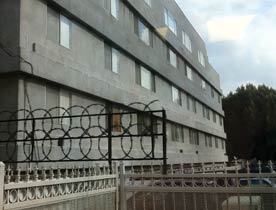Welcoming Affordable Housing
For more than three decades, Montgomery County has voluntarily operated housing policies that have not only increased the supply of its affordable housing stock, but have allowed the county to do so in a manner that would prevent the concentration of poverty. In 1974, facing both a shortage of workers available to fill its lowest-paid jobs and a heated housing market that priced out even middle-class families, the county adopted an inclusionary zoning (IZ) policy that required all developers of market-rate residential developments of 20 units or more to set aside 12.5 to 15 percent of the units to be rented or sold at below-market prices. These units were called “moderately priced dwelling units” (MPDUs).
The MPDU program is by the far the largest IZ program in the nation, and it has been responsible for the production of more than 12,000 MPDUs in the county since 1976. Similar policies that operate on a much smaller scale have since spread to many other high-cost housing markets in the United States. IZ experts Nico Calavita and Alan Mallach estimate in their book Inclusionary Housing in International Perspective that more than 500 localities operate some kind of inclusionary housing policy within the United States.
Taking It to Very Low
Much less well-known is Montgomery County’s IZ program singular feature that allows not only moderate-income but also very low-income households to live in affluent neighborhoods throughout the county. It does this by allowing the county’s public housing authority the right of first refusal to purchase up to one-third of IZ units produced in a given development. The county’s public housing authority, the Housing Opportunities Commission (HOC), has, to date, purchased approximately 1,500 units. Of these, about 700 are scattered-site public housing rental homes, 250 were sold to homeowners, and the remaining units are rentals subsidized by a combination of federal, state, or local funds.
As a public housing authority (PHA) that is also a housing finance agency, the HOC has more financing tools than are available to a typical PHA. The HOC purchases the units with a variety of affordable housing program funds, including public housing capital dollars, equity raised by the sale of Low Income Housing Tax Credits, Maryland state partnership funds, local Housing Initiative Funds, and general purpose local government funds. The HOC leases out the majority of the MPDUs it purchases, but it also resells some of these units to income-qualified purchasers, purchasing mortgages of some qualified purchasers with funds backed by mortgage revenue bonds. HOC buys MPDUs and then sells a small number of them to low-income purchasers. In those instances, HOC sometimes buys the private mortgages from those purchases.
Of the HOC’s funding sources, the one perhaps most relevant to PHAs in other localities with inclusionary zoning policies, is Housing Choice Vouchers (HCVs). In 49 cases, the HOC has entered into a master lease with the owners of a market-rate housing development to apply project-based vouchers to specific MPDUs. It also operates an HCV homeownership program that currently has 25 participants enrolled and has had 11 purchasers to date, some of whom have bought MPDUs. The HCV subsidy in combination with the county’s inclusionary zoning mechanism provides low-income families with the ability to rent, and in some cases own, housing in market-rate developments with proximity to low-poverty schools and to jobs.
There are costs that the HOC absorbs in project-basing rental IZ units in particular. The primary one is that, as the master lessee, the HOC is responsible to pay the monthly costs for the HCV unit whether it is occupied or not, which means HOC must pay during periods of vacancy, when the federal HCV subsidy is not available. In addition, HOC also covers occasional costs such as parking space fees at some properties, for which HCV subsidy does not apply.
When the MPDU program was first adopted in the 1970s, residential construction in the county was dominated by suburban, single family greenfield development. The mandatory inclusion of MPDUs in these subdivisions was achieved either through smaller single family homes or townhomes, which allowed for construction savings on the MPDUs. But as developable land became scarce, new construction shifted toward more dense, transit-oriented, multifamily developments, including high-rise buildings. The constraints of multifamily construction has made it more difficult to set aside smaller or lower-cost homes within a subdivision, and the county is currently considering whether to accommodate this challenge through the addition of a payment in lieu option. In addition, the county struggles with ways to make high condominium fees affordable for moderate-income households who have purchased a MPDU.
The Schooling Effects
Offsetting these costs and challenges of operating the IZ program, however, are the substantial benefits to children of low-income families in MPDUs. The primary intent of the MPDU program has been and still is to allow low- or moderate-income households to live near where they work. But the HOC’s participation in the county’s IZ policy has also had the effect of allowing even households who earn incomes below the poverty line to send their children to schools where the vast majority of students come from families that do not live in poverty.
This is significant, since the vast majority of schools in the United States with high concentrations of students from low-income families perform less well than schools with low concentrations of poverty. In 2009, more than one-half of fourth and eighth graders who attended high-poverty schools failed the national reading test, compared to fewer than one-fifth of students from the same grade levels who attended low-poverty schools. The prevailing theories about the advantages of low-poverty schools are that they not only benefit from having more material resources, but also reap the stability-conferring benefits from having greater parental stewardship and attract and retain a better-prepared corps of teachers, administrators, and students.
To date, the Montgomery County housing authority has purchased about 700 MPDU homes that are located in market-rate apartment complexes that it operates as public housing. All told, it operates 992 public housing family apartments (some clustered in small public housing developments) that are located in hundreds of neighborhoods throughout the county and are zoned into almost all of the school district’s 131 elementary schools. Families who occupy the public housing apartments in Montgomery County have an average income of $22,460 as of 2007, making them among the poorest households in the county. The apartments are leased at a fraction of the normal market rates: whereas the average monthly rent for a two-bedroom apartment in Montgomery County in 2006 was $1,267, public housing tenants’ average rent contribution was $371 (equal to one-third of their income, per federal regulation) in the same year.
The Housing Opportunities Commission randomly assigns applicants to the public housing apartments. (See Housing Policy Is School Policy, The Century Foundation report for details on random assignment and low attrition rates.) Since almost all of the county’s elementary schools have neighborhood-based attendance zones, children in public housing thus are assigned randomly to their elementary schools via the public housing placement process. This feature prevents families’ self-selection into neighborhoods and elementary schools of their choice, which in turn allows for a fair comparison of children in public housing in low-poverty settings to other children in public housing in higher-poverty settings within the county.
Building on the strength of the random assignment of children to schools, I examined the longitudinal school performance from 2001 to 2007 of approximately 850 students in public housing who attended elementary schools and lived in neighborhoods that fell along a spectrum of very low-poverty to moderate-poverty rates. After five to seven years, students in public housing who were randomly assigned to low-poverty elementary schools significantly outperformed their peers in public housing who attended moderate-poverty schools in both math and reading. Further, by the end of elementary school, the initial, large achievement gap between children in public housing who attended the district’s most advantaged schools and the non-poor students in the entire district was cut by half for math and one-third for reading.
As anticipated, the academic returns from economic integration diminished as school poverty levels rose. Children who lived in public housing and attended schools where no more than 20 percent of students qualified for a free or reduced meal did best, whereas those children in public housing who attended schools where 20 to 35 percent of students qualified for a free or reduced price meal performed no better academically over time than public housing children who attended schools where 35 to 85 percent of students qualified for a free or reduced price meal. (Note that fewer than 5 percent of schools had more than 60 percent of students from low-income families, and none had more than 85 percent in any year, making it impossible to compare the effects of low-poverty schools with truly high-poverty schools, where 75 percent to 100 percent of the families are low-income.)
Children in public housing benefitted academically from merely living in low-poverty neighborhoods, but that effect was much smaller than the effect of attending low-poverty schools. There is suggestive evidence that, above and beyond which schools they attended, low-income children who lived in very low-poverty neighborhoods (where 0 percent to 5 percent of families live in poverty) experienced modest academic benefits as compared to those children in public housing who lived in low-poverty neighborhoods (where 5 percent to 10 percent live in poverty).
School-based economic integration, however, had about twice as large an effect as neighborhood-based economic integration on low-income children’s academic performance. However, the prevailing low poverty rates within Montgomery County only allowed for a limited test of neighborhood poverty effects.
Furthermore, the county adopted in 2000 a policy to direct extra resources to its 60 neediest elementary schools, to introduce full-day kindergarten, reduce class sizes, devote greater time to literacy and math, and provide extra professional development to teachers. These 60 schools are termed “red zone” schools, and the remaining 131 elementary schools are “green zone” schools. Despite these extra resources, by the end of elementary school public housing children who attended green zone elementary schools still substantially outperformed their red zone public housing peers.
Outside Montgomery County
Housing and education have traditionally been considered the primary instruments of social mobility in the United States. Since education is an investment with both individual and societal benefits, improving low-income students’ school achievement using integrative housing can not only reduce the income achievement gap but also help stem future poverty. Furthermore, the experience of Montgomery County shows that it can be in the self-interest of both localities and low-income families to create economically integrated neighborhoods and schools.
With a need for an economically heterogeneous population, Montgomery County sought since the 1970s to direct and spatially spread the growth of its lower-income households throughout its jurisdiction. Hundreds of other high-cost jurisdictions have also sought to increase and spread their supply of affordable housing, albeit in small numbers, via inclusionary housing policies. As the Montgomery County example attests, doing so requires at least modest local resources to adopt and enforce the IZ policy as well as political will to weather dissention around the policy.
Although most education research attempts to quantify the effects of various promising school-based reforms for low-income children, many of which Montgomery County has embraced — for example, full-day kindergarten, smaller class sizes in early grades, a balanced literacy curriculum, increased professional development — the results from this study suggest that efforts to enroll low-income children in low-poverty schools are even more powerful.






Comments